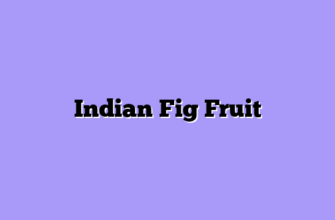You know what’s funny? Most folks see a cactus and think “ouch” or maybe “desert decoration.” But when I look at my sprawling patch of Opuntia ficus-indica, all I see is pure gold. Well, technically it’s more green with splashes of magenta and sunshine yellow, but you get what I mean. This remarkable plant—known by dozens of names depending on where you’re standing on this planet—has completely transformed not just my farm, but my entire perspective on what “exotic” fruit farming really means.
Let me tell you about the nopal, as my Mexican neighbors call it, or tuna cactus if you’re chatting with someone from the Southwest. The Indigenous peoples of the Americas have been cultivating this beauty long before European settlers showed up with their apple trees and wheat fields. Today, I’m proud to be part of a growing movement of American farmers rediscovering what ancient civilizations knew all along: this plant is an absolute powerhouse.
Why I Fell Head Over Heels for This Spiny Survivor
My first encounter with Opuntia ficus-indica—that’s the scientific name for those keeping track—happened almost by accident. I was visiting a specialty produce market in Southern California, and there they were: these vibrant, oval fruits that looked like they’d been plucked from an alien landscape. The vendor called them cactus pears, and after one taste, I was hooked. That sweet, watermelon-meets-pear flavor with just a hint of bubblegum? Absolutely divine.

The Indian fig, as it’s sometimes called (probably because early botanists thought it originated from the West Indies), thrives where other fruit crops would simply give up and die. We’re talking survival in conditions that would make a tomato plant weep—temperatures up to 120°F, minimal water, poor soil quality. This plant doesn’t just survive; it flourishes. According to the Food and Agriculture Organization, prickly pear can produce up to 20 tons of fruit per hectare in optimal conditions, and “optimal” for this cactus is what most plants would consider barely livable.
Getting Up Close and Personal: What You Need to Know
Let’s talk about the plant itself, because Opuntia ficus-indica is genuinely fascinating. Picture thick, paddle-shaped segments—botanists call them cladodes, but I just call them pads—stacked on top of each other like nature’s version of building blocks. Each pad is actually a modified stem that performs photosynthesis, stores water, and produces those gorgeous flowers that eventually become fruit.
Nutritional Breakdown of Prickly Pear Fruit (per 100g)
| Nutrient | Amount | % Daily Value |
|---|---|---|
| Calories | 41 kcal | 2% |
| Carbohydrates | 9.6 g | 3% |
| Dietary Fiber | 3.6 g | 14% |
| Vitamin C | 14 mg | 23% |
| Magnesium | 85 mg | 21% |
| Calcium | 56 mg | 6% |
| Potassium | 220 mg | 6% |
Now, before you rush out to start your own patch, let me share some hard-won wisdom. Those glochids—the tiny, hair-like spines that cover the fruit and pads—are sneakier and more annoying than their larger spine cousins. I learned this the hard way during my first harvest season. Trust me, you want thick gloves, long sleeves, and a healthy respect for these natural defenses.
The fruit itself, whether you call it cactus fig, Barbary fig, or tuna (not the fish kind!), comes in a spectacular array of colors. I grow varieties that produce deep magenta fruits, golden yellow ones, and even some that ripen to a peachy orange. Each color has subtle flavor differences, which keeps my restaurant clients coming back for more variety.
From Planting to Profit: My Real-World Experience
Starting a nopal operation isn’t like planting an apple orchard. For one thing, it’s way easier. I began with just fifty pads that I sourced from a fellow grower in Arizona. The barbary fig, as some old-timers call it, propagates so readily that I sometimes joke it’s the plant equivalent of those chain letters—except this one actually pays dividends.
Here’s my basic establishment process:
- Site selection (full sun, well-draining soil, minimal water access needed)
- Pad preparation (let them callus for a week before planting)
- Planting depth (bury about one-third of the pad vertically)
- Initial watering (once after planting, then back off)
- First-year patience (no fruit yet, but explosive growth)
- Second-year harvest (this is when the magic happens)
By year three, my initial investment of fifty pads had multiplied into over two thousand productive segments. The math was starting to look really interesting. Each mature pad can produce 5-8 fruits per season, and with proper management, you’re looking at two harvest periods in warmer climates.
Growing Conditions Comparison
| Factor | Traditional Orchard | Prickly Pear Farm |
|---|---|---|
| Water Requirements | High (30-40 inches/year) | Low (8-15 inches/year) |
| Fertilizer Needs | Regular applications | Minimal to none |
| Pest Pressure | Moderate to high | Low |
| Labor Intensity | High | Moderate |
| Climate Resilience | Low to moderate | Extremely high |
| Establishment Time | 5-7 years | 2-3 years |
What really surprised me was the market reception. I initially worried that American consumers wouldn’t know what to do with cactus pears. Boy, was I wrong. The health food movement has embraced this fruit with open arms. It’s loaded with antioxidants, fiber, and has been shown in several studies to help regulate blood sugar levels—a game-changer for diabetic consumers. One Mexican study from 2014 found that consuming nopal could reduce blood glucose levels by up to 17-48% when eaten before meals.
Beyond the Fruit: The Whole Plant is Your Oyster
Here’s where things get really exciting. While most people focus on the fruit, the young pads—called nopales in Mexican cuisine—are actually where I make a significant portion of my income. These tender young cladodes are a staple in Latin American cooking, and the demand in urban markets with Hispanic populations is absolutely booming.
Think about it: how many crops give you two completely different products from the same plant? It’s like having a chicken that lays eggs and produces wool. Okay, bad analogy, but you see my point. I harvest young pads year-round for the vegetable market while timing my fruit production for peak summer demand.
The culinary applications are endless:
- Fresh fruit eaten raw or juiced into aguas frescas
- Pads grilled, sautéed, or pickled as a vegetable
- Fruit processed into jams, syrups, and candies
- Seeds pressed for oil (though I haven’t ventured here yet)
- Even the flowers can be eaten or used for tea
I’ve developed relationships with five local restaurants that feature nopalitos—that’s the diced, cooked pads—in everything from tacos to fancy salads. One chef told me she loves how they add a slightly tart, green bean-like flavor with a unique texture. She’s even created a prickly pear reduction that she drizzles over grilled fish. Watching chefs get creative with your produce? That never gets old.
The Challenges Nobody Talks About
Look, I’d be lying if I said this was all sunshine and cactus flowers. The Indian fig prickly pear comes with its own set of headaches. First, there’s the cochineal scale insect. These little bugs produce that famous carmine dye, which sounds cool until they’re infesting your crop. I’ve learned to manage them with beneficial insects and careful monitoring, but it requires vigilance.
Then there’s the public perception issue. Despite growing interest, many Americans still view cactus as landscaping, not food. I spend a fair amount of time at farmers’ markets doing education and samples. Once people taste the fruit, they’re usually sold, but getting them to that first bite requires effort.
The harvest itself is labor-intensive and requires training. You can’t just hire any seasonal worker and expect them to figure it out. Those glochids I mentioned earlier? They’ll send inexperienced harvesters running for the hills. I’ve developed specific protocols:
My Essential Harvesting Toolkit:
- Heavy-duty leather gloves (two pairs minimum)
- Long-handled tongs for fruit picking
- Propane torch for singeing glochids off pads
- Stiff brushes for fruit cleaning
- Protective eyewear (glochids can become airborne)
- First aid supplies (especially tweezers and tape)
Weather can also throw curveballs. While the mission cactus (another regional name) handles heat brilliantly, unexpected hard freezes can damage pads and fruit. I’ve learned to cover my most valuable sections when the weather forecast looks dicey, though honestly, the plant is pretty resilient even to occasional cold snaps down to about 25°F.
The Future Looks Bright (and Slightly Spiny)
Climate change is making conventional agriculture increasingly challenging, but it’s creating opportunities for those of us growing drought-adapted crops. The University of Nevada research from 2019 found that prickly pear cultivation could become economically viable across much of the American Southwest and parts of the Southeast as water becomes scarcer and temperatures rise.
I’m not celebrating climate change—don’t get me wrong—but I am excited about the potential for crops like Opuntia ficus-indica to provide food security in increasingly difficult growing conditions. Mexico produces over 800,000 tons of nopal annually, making it a significant agricultural commodity. There’s no reason American farmers can’t tap into this market while addressing climate resilience.

Is growing Indian fig prickly pear going to replace corn and soybeans as American agriculture staples? Probably not. But is it a viable, profitable, and increasingly relevant crop for farmers willing to think outside the traditional agriculture box? Absolutely. Every time I walk through my cactus field at sunrise, those pads glowing in the early light and laden with jewel-toned fruit, I’m reminded that sometimes the best opportunities are the ones hiding in plain sight—or behind a few spines.
Whether you call it nopal, tuna, cactus pear, mission cactus, or simply Opuntia ficus-indica, this plant represents something important: agricultural resilience, cultural connection, and the beautiful possibility that the future of farming might look a lot different than its past. And honestly? I’m here for it, glochids and all.








